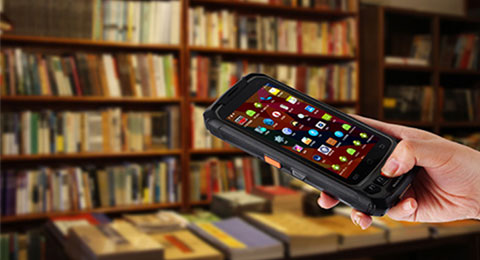400-9920-618
With the rapid development of modern society, the level of educational technology has improved. The investment in fixed assets in colleges and universities has increased (books, voice system classrooms, multimedia equipment, large-scale teaching equipment, etc.), and the management is also increasingly fatigued. The fixed assets have the characteristics of high equipment value, long service cycle, loose allocation location, and difficult management. Therefore, the management of fixed assets has become a tedious and complicated systematic project in the management of colleges and universities. For now, most colleges and universities implement the management mode of fixed asset management based on the principle of separate management of accounts and materials. Usually, the equipment department manages teaching equipment, the logistics department manages land, houses, buildings, and furniture, the library manages books and magazines, and the financial department is responsible for the value of fixed assets. Objectively speaking, at present, colleges and universities generally adopt a mode of dividing the functions of relevant departments of fixed asset management, and each department is responsible for equipment procurement, asset management, financial accounting, etc.
But the traditional management method has low stock-taking efficiency, high labor cost and error-prone,intelligent RFID handheld terminal has great significance to the liquidation and verification of fixed assets.

The RFID handheld terminal sends a radio frequency signal of a certain frequency through the radio frequency antenna. When the electronic tag enters the working area of the transmitting antenna, an induced current is generated, and the electronic tag obtains energy and is activated; the electronic tag sends information such as its own code through the built-in transmitting antenna of the card; the system receives The antenna receives the carrier signal sent from the electronic tag, and transmits it to the reader through the antenna regulator. The reader demodulates and decodes the received signal, and then sends it to the background main system for related processing; the main system judges the signal according to the logic operation. According to the validity of the card, the corresponding processing and control are made according to different settings, and the command signal is sent to control the action of the actuator.
When the management department purchases items into the warehouse, they install electronic tags, and the information of the assets is written in the tags. Every time an asset management operation is performed, the handheld terminal device will automatically read the items. The above electronic tags and information are sent back to the server for processing, so as to realize the real-time tracking and management of assets. Tag registration is also a one-time completion. Register the newly purchased assets—through “entering asset information into handheld terminal equipment”, write the equipment-related information (asset barcode, model, name, location) to be managed into the “electronic label for asset management”; assets The information can be modified according to the actual requirements of the asset management department, and the fixed management information such as the device name will be permanently locked after being written into the label to prevent the user department from making changes and causing confusion in management. After the asset information is solidified, attach the "asset management electronic label" that stores the equipment asset information to the equipment asset. If the label is attached to the asset, it cannot be removed. If it is removed manually, the label will be damaged automatically.
The efficiency of inventory and inventory has been greatly improved. All asset data is input at one time, and the system automatically determines whether the asset status is newly added, allocated, idle, scrapped, etc. according to the data collected by different base stations and regional RFID handheld terminal equipment. Through the visual GIS operation interface, end users can conduct real-time statistics and query of asset data anytime, anywhere and through browsers. When performing asset inventory, you can use the "handheld terminal device" to conduct irregular inspections to check the asset management situation, and efficiently and quickly find out if the borrowing or replacement is not carried out privately according to the formal process. The RFID handheld terminal can identify and read multiple RFID tags at the same time, batch processing, instant completion, and higher efficiency.
RFID handheld terminal can realize "full life cycle management" and "automatic management". RFID tags can add, modify, and delete data stored in RFID tags without limitation. Accurate and efficient reading can be achieved as long as it is within the coverage of radio waves. Greatly improve the efficiency in the management of fixed assets. The whole process is fast, simple and convenient, without the intervention of any other factors.